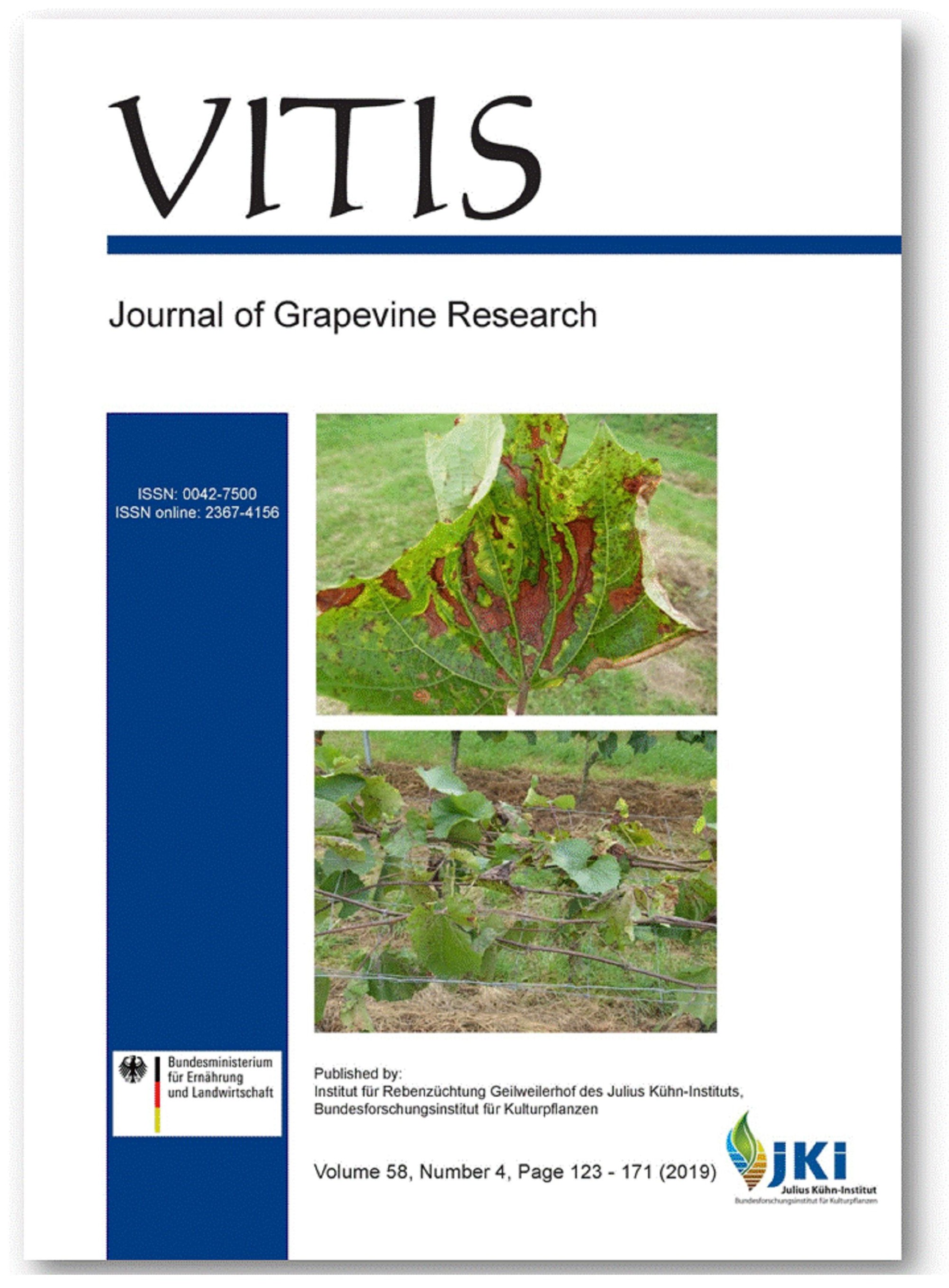In vitro evaluation of berries of various Vitis genotypes for disease resistance to Botrytis cinerea
DOI:
https://doi.org/10.5073/vitis.2019.58.123-130Keywords:
Vitis vinifera L.; resistant levels; jasmonic acid; ROS; Anti-oxidant; microscopyAbstract
Berries of 41 Vitis genotypes were evaluated for resistance to B. cinerea. Evaluation revealed that four genotypes were highly resistant (HR), eight resistant (R), eighteen susceptible (S) and eleven highly susceptible (HS). We further evaluated HR genotype 'Dong fang zhi xing' and HS genotype 'Gold finger' by comparing the fungal growth, reactive oxygen species (ROS) responses, jasmonic acid (JA) levels, anti-oxidants, e.g., Peroxidase (POD), Superoxide dismutase (SOD) and Malondialhydrate (MDA) content changes after infection with B. cinerea. Our results confirmed that the elevated resistance of 'Dong fang zhi xing' was due to weak fungal development, low ROS production, timely elevation of anti-oxidative functions, and high JA levels. Moreover, HS 'Gold finger' infection was severe and sustained ROS production which may be due to its relatively unchanged anti-oxidative activities and low JA level. Our results could help grape breeders to select suitable germplasm for future research work.
Downloads
Published
Issue
Section
License
The content of VITIS is published under a Creative Commons Attribution 4.0 license. Any user is free to share and adapt (remix, transform, build upon) the content as long as the original publication is attributed (authors, title, year, journal, issue, pages) and any changes to the original are clearly labeled. We do not prohibit or charge a fee for reuse of published content. The use of general descriptive names, trade names, trademarks, and so forth in any publication herein, even if not specifically indicated, does not imply that these names are not protected by the relevant laws and regulations. The submitting author agrees to these terms on behalf of all co-authors when submitting a manuscript. Please be aware that this license cannot be revoked. All authors retain the copyright on their work and are able to enter into separate, additional contractual arrangements.



